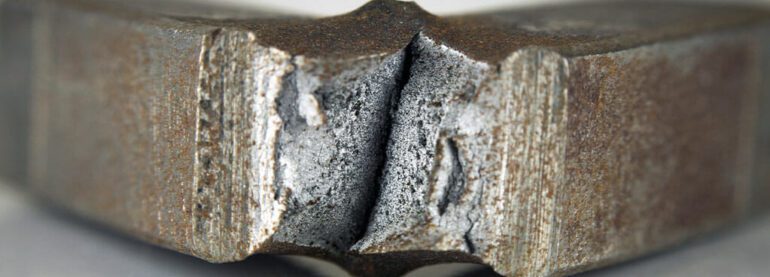TL;DR:
- MIT engineers use machine learning to analyze material surfaces, eliminating the need for intuition.
- Traditional methods are limited by static characterizations, while MIT’s approach explores millions of possibilities.
- The Automatic Surface Reconstruction framework provides dynamic information about surface properties under different conditions.
- AutoSurfRecon, the tool developed, is freely available to researchers worldwide.
- Potential applications include catalyst development, “green” hydrogen production, and carbon dioxide removal.
Main AI News:
In the world of materials science, understanding how the surfaces of materials behave is a critical aspect of designing new compounds or alloys. Traditionally, this has been a complex process relying heavily on the intuition and expertise of experienced chemists. However, a team of researchers at the Massachusetts Institute of Technology (MIT) has recently introduced a groundbreaking approach that leverages machine learning to revolutionize this field. This innovative method not only eliminates the need for intuition but also provides more detailed information than conventional techniques can practically achieve.
Imagine a scenario where a material has been under scrutiny for three decades using traditional methods. The MIT research team applied their new system to this very material and made astonishing discoveries. They found that the material’s surface could form two previously unidentified atomic configurations, while one configuration observed in earlier studies was deemed unstable. These groundbreaking findings are documented in the prestigious journal Nature Computational Science in a paper authored by MIT graduate student Xiaochen Du, along with esteemed professors Rafael Gómez-Bombarelli and Bilge Yildiz, MIT Lincoln Laboratory technical staff member Lin Li, and three other experts in the field.
Materials’ surfaces often interact with their surroundings in ways that are highly dependent on the specific configuration of atoms on the surface. It’s analogous to slicing a layer cake with raisins and nuts within it. The way you cut the cake determines the layers and fruits exposed on the edge of your slice. Similarly, the environment plays a crucial role, just as the cake’s surface changes when soaked in syrup or exposed to varying temperatures in the oven. This is akin to how material surfaces respond when immersed in a liquid or subjected to different temperature conditions.
Traditional methods for characterizing material surfaces are static and focus on particular configurations out of the millions of possibilities. However, the new approach offers a breakthrough by providing estimates of all potential variations through an iterative machine-learning process, based on a limited number of first-principles calculations. This allows researchers to identify materials with desired properties more efficiently.
Moreover, unlike typical methods, this innovative system provides dynamic information about how surface properties evolve over time under various operating conditions. For instance, it can track changes while a catalyst is actively promoting a chemical reaction or when a battery electrode is charging or discharging.
The researchers’ method, known as an Automatic Surface Reconstruction framework, stands out by avoiding the need for hand-picked surface examples to train the neural network. Instead, it starts with a single pristine surface example and utilizes active learning in combination with a Monte-Carlo algorithm to select sites for sampling on that surface. This approach, which involves fewer than 5,000 first-principles calculations, proves highly accurate in predicting surface energies under different conditions.
In the words of Xiaochen Du, “We are looking at thermodynamics, which means that, under different kinds of external conditions such as pressure, temperature, and chemical potential, we can investigate what is the most stable structure for the surface.” While theoretically determining surface thermodynamic properties requires knowing the surface energies across countless atomic arrangements, it is often impractical on a typical laboratory scale. Traditional methods have relied on examining only a few specific cases, which cannot provide a comprehensive statistical view of dynamic properties.
With their method, the researchers introduce a cost-effective approach to sampling the thermodynamics of different compositions and configurations, even for harder materials. As Du emphasizes, “We have new features that allow us to sample the thermodynamics of different compositions and configurations at a lower cost, with fewer expensive quantum mechanical energy evaluations.”
This revolutionary tool, named AutoSurfRecon, has been made freely available to researchers worldwide. It can significantly aid in the development of new materials for catalysts, such as those used in “green” hydrogen production, as well as components for batteries and fuel cells.
Rafael Gómez-Bombarelli underscores the importance of understanding the surface properties of catalysts, stating, “At the end of the day, in catalysis, the entity responsible for the catalyst doing something is a few atoms exposed on the surface, so it really matters a lot what exactly the surface looks like at the moment.” Additionally, this method has the potential to advance the study of chemical reactions aimed at removing carbon dioxide from the air or power plant emissions, offering valuable insights into the surface dynamics of these processes.
Conclusion:
MIT’s innovative machine learning approach to analyze material surfaces holds significant promise for the market. Automating and revolutionizing the materials science field enables researchers to explore a broader range of possibilities and accelerate advancements in catalyst development, sustainable energy production, and environmental solutions. This breakthrough has the potential to drive innovation and create new opportunities in these critical sectors.

